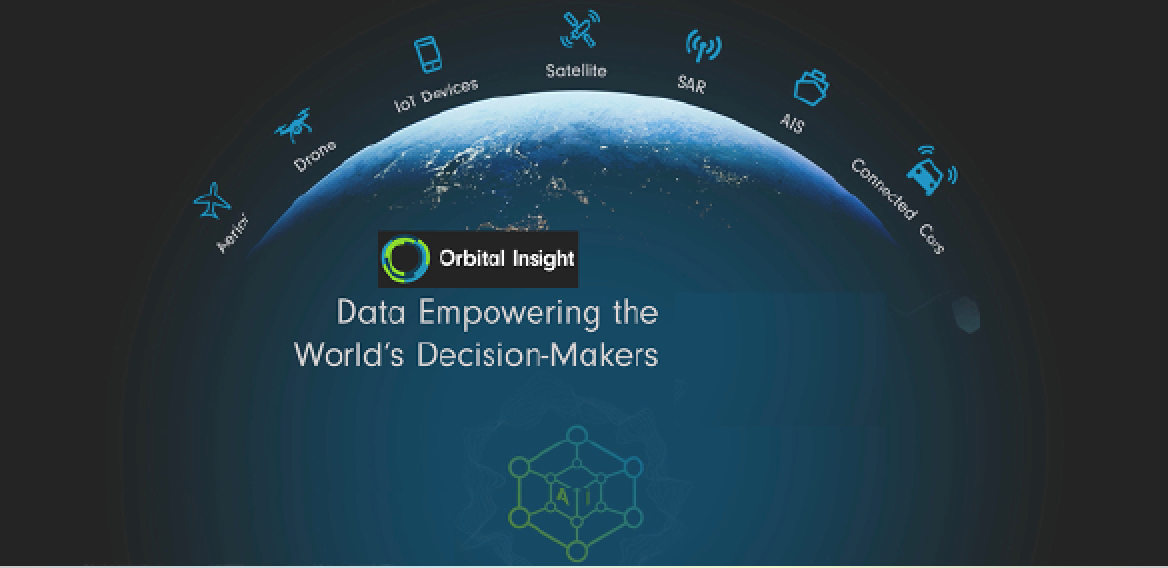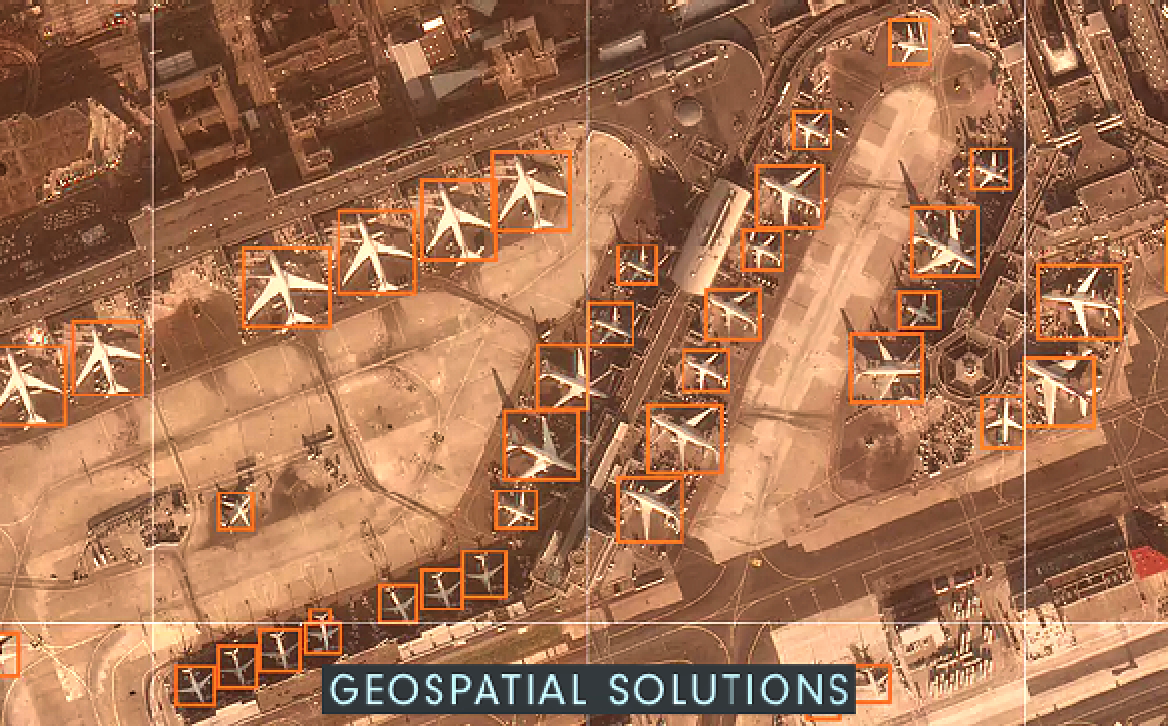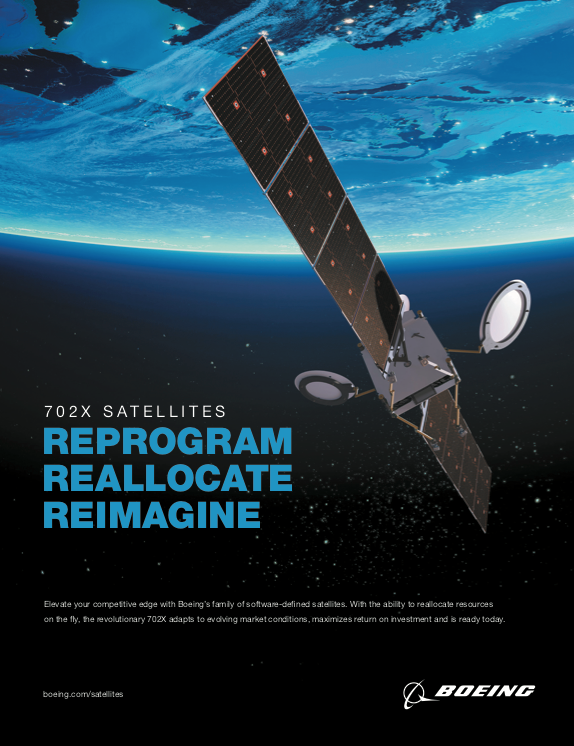Craig Brower is the Vice President and General Manager, Public Sector, at Orbital Insight. He is an accomplished business development strategist with extensive experience in identifying and developing business opportunities, nurturing critical partnerships as well as launching new products and services. Craig’s Ccore competencies include: Strategic Business Planning, Financial and Contract Negotiation, Account Management, Partnership Development, Competitive Analysis, Congressional Relations, New Market Development Good day, Mr. Brower.

Would you please give our readers an idea as to your background and how you became involved with Orbital Insight?
Craig Brower
I began my career with the Federal Government as a photographer for the CIA. Over the course of my 11 years with the agency, I worked as a research analyst as well as a program manager for new and emerging technologies. It was during this time that I found my passion for applying technology to answer critical questions about the world we live in. After leaving government service, I helped to build what is today the Global Analysis business unit at BAE Systems and then spent several years selling commercial satellite imagery in the IC and DoD markets. More recently, I was the third U.S. employee for startup Vricon, a joint venture between SAAB AB and DigitalGlobe (now Maxar). At Vricon we created and sold a new 3D technology at global scale to the U.S. government. Vricon was acquired in 2020 and, in January of 2021, I joined the Orbital Insight team as vice president and general manager of the firm’s public sector business. My goal in this role is to accelerate the adoption of AI and ML technologies in the public sector market.
What does Orbital Insight offer and how can the company’s technology improve the way analysis is currently done in the defense and intelligence community?
Craig Brower
Orbital Insight’s GO platform is an AI-powered, geospatial analytics platform designed to simplify the use of location data and allow users to query the world with three basic parameters: the what, where, and when.
Orbital Insight’s GO platform uses AI to process multiple sources of geospatial data — satellite images, mobile location, connected cars and other IoT data —into objective answers to critical security questions about what’s happening on the ground.
The defense and intelligence community uses Orbital Insight’s technology to monitor global activity and proactively address critical situations. The technology supports critical activity-based intelligence by helping spot trends buried within billions of data points—for example, military asset movement, near peer geopolitical activity, economic patterns associated with global ports, airports and energy infrastructure, and government responses to natural disasters.
The automation capabilities of Orbital Insight’s technology are particularly transformational for the public sector community. The government has people whose entire jobs are dedicated to monitoring satellite imagery and other data sources, but the volume of data has become too massive to access and analyze at scale. In fact, it would take approximately 8 million people to look at all the satellite imagery produced of the Earth every day.
By using AI and data science we can count and identify cars, trucks, planes, railcars, and new roads and buildings all over the world, aggregate the results and highlight anomalies to the human analysts. What would take a human analyst hours or even days to decipher, takes only seconds due to the automated analytical technology. Orbital Insight helps the defense and intelligence community monitor the world to detect anomalies, prevent surprises, and respond with the right security policies, communications and aid.
You note that your company’s GO platform is a geospatial analytics platform. When you use the term ‘geospatial’ as such applies to the military /agency/ government market segments, what exactly does that encompass?
Craig Brower
In our view, the goal of geospatial analytics is to understand what’s happening on and to the Earth. To do that, geospatial data usually covers location information, attribute information and temporal information.
The term “geospatial” applies to the military and government markets in the same way as the term applies to commercial or personal use.
The difference is the absolute importance for the data to be as accurate and complete as possible when applied within a government segment. The military uses the terms reliability and explainability; it is all about ensuring that the best and cleanest information possible is accessible by our military and intelligence leaders. That information can include maps, directions, visualizations and especially patterns of life — all of which can tip-and-cue decision-makers to anomalies. If something is not normal or if situations change, our customers need to know it and they need to know it as soon as possible.
What makes Orbital Insight’s capability unique? How does Orbital Insight’s capability differentiate from the competition?
Craig Brower
Orbital Insight develops geospatial data analytics to help our clients unlock trends at a global scale. While other companies use AI, process big data from multiple sources, and analyze imagery, only Orbital Insight combines them all into a single self-service platform, called GO. Our GO technology ingests satellite imagery, geospatial data, IoT, demographic, advertising data, and other open source data and translates results into explainable, reliable, unclassified and non-proprietary insights. Customers tell us that GO is the most comprehensive yet distillable solution out there.
“Big Data from multiple sources” — would you give us some examples of the sources used by Orbital Insight to formulate their data?
Craig Brower
We use various types of imagery data coming from commercial satellites, drones, and high-altitude balloons. Our platform also ingests mobile phone or AdTech data for geolocation information as well as AIS and ADB data for tracking ships and aircraft. In addition, we partner with other companies to provide our customers with access to RF and SAR data.

How can AI be used to support the analyst? Does AI replace the need for humans?
Craig Brower
AI is an incredibly helpful tool in analytics, but it will never replace the need for humans. Our goal is to augment the performance of the analyst and the vision is to leverage the human-in-the-loop paradigm.
GO does not remove the analyst from the equation — it simply saves them time that can be used to probe intelligence challenges more deeply. By processing large amounts of data, GO’s automation can tip-and-cue the analyst to what matters most.
For example, GO users can set alerts and automatically cue follow-up observations upon detection of indications and warnings. GO also enables geospatial and data analysts to automatically monitor thousands of areas of interest, from hyperlocal to global. Analysts benefit from high revisit collection platforms and high-performance analytics — reducing the time from event to analysis.
What’s the most interesting finding you’ve uncovered recently?
Craig Brower
There are so many interesting findings, it’s difficult to pick just one. For instance, with our new Supply Chain Intelligence feature, we have been able to locate groups moving between China and North Korea and then
on to other locations in the region. We’ve also been able to make sense of Russian military activity in southeastern Ukraine and detected evidence of a major Russian offensive military training event in the Crimea region.
More recently, we’ve uncovered China’s port development in Djibouti, as well as China’s depredation of the local fish populations off the coast of Ecuador and Peru that has the deep interest of our maritime partners. Open source intelligence analysts from Stanford’s Center for International Security and Cooperation have also been using GO to monitor nuclear proliferation in North Korea and Iran.
Mr. Brower, would you please discuss the ways wherein this crucial intelligence could inform strategic decisions on the battlefield.
Craig Brower
The intelligence that our technology gathers via AI can help decision- makers better understand normal patterns of life and then set alerts when those norms change. It also helps them identify threat indications and warnings, enabling more strategic operational planning and target development.
Is AI already widely adopted within the defense space? How do you see this changing in the next couple of years?
Craig Brower
The defense industry has widely accepted the need for AI but has yet to fully adopt and implement it. The DoD is taking steps to enable adoption of new and advanced data technologies, and between the Joint Artificial Intelligence Center and the services, there is a serious effort underway to test AI technologies, prepare data for AI integration, and build tool sets to solve unique military problems. A clear case has been made for the utility of AI in the defense and intelligence space, and it’s also clear that accuracy and reliability of its use is paramount. I’m encouraged by the pace, progress and thoroughness of the effort to implement AI more widely in the defense sector. An area of deep concern within the intelligence community is that of security, the protection of data from outside ‘influences.’
How does Orbital Insight handle this area of your technology?
Craig Brower
Orbital Insight sources our data from multiple industry-leading vendors, and we authenticate all data to ensure we are sourcing from the actual vendors. Much of the data we source is overlapping for the most comprehensive coverage, and we run correlation and correction processes o remove invalid data. We also follow industry best practices regarding cybersecurity.
The data is encrypted within our environment to prevent modification or tampering. Lastly, we follow a strict ethics policy, which goes above and beyond what the law requires to ensure that we never identify individuals beyond what the l with our products.
What are the biggest challenges for adoption of AI in the defense and intel community today?
Craig Brower
Reliability is the biggest challenge. First, AI must be explainable, transparent, and properly trained. There has to be a clear answer to why an algorithm decides one outcome versus another when presented with various data sets.
Second, AI has to be accurate. This is especially important in target development and execution. The data behind it must be protected and free of malign or corrupt influence.
Tremendous progress has been made on all of these fronts, and with any technological innovation there are obstacles to overcome. Overall I’m impressed with the continued developments.
What measures are you taking to ensure that your AI is used ethically?
Craig Brower
All of our data is anonymized to protect the sources or content of the data. Privacy is an extremely important value to us and one we take seriously. We have established an ethics board to review and assess potential ethical questions and operate within our ethics framework which shapes all of our work and decision making.
What may we expect from Orbital Insight over the coming months?

Craig Brower
You can expect a growing, impactful contribution to the U.S. government, building upon a firm foundation of existing defense work. We’ve demonstrated success in commercial markets, and as we scale our public sector side of the business, you’ll see more features designed to support the DoD, specifically in global airfield and ship port monitoring. We are in the process of deploying a new open architecture software service that will allow us to integrate many different types of data sets under one roof and on one screen that will provide the analyst with insights derived from Electro-Optical imagery, IoT/Cloud data, AIS, ADB, SAR, RF, and even HSI data. We want to become the single integrator for unique commercial data to support military analysts.
Lastly, Mr. Brower, when you look back upon your career, what missions or projects truly bring a sense of satisfaction to you and a smile to your face?
Craig Brower
Mission success is the most rewarding aspect of my career, and that has been delivered in many different ways. At BAE Systems, I was honored to be able to hire some of the best analysts on the planet and their mission success with our customers was extremely rewarding. When I sold data and software solutions, it was most rewarding to learn of successful missions from our intel and warfighter customers because of our products.
Most of those successes cannot be shared publicly, but you might catch a smile from me when that success is reported in the media.
orbitalinsight.com


